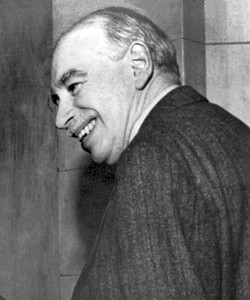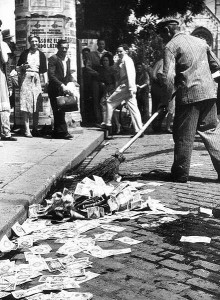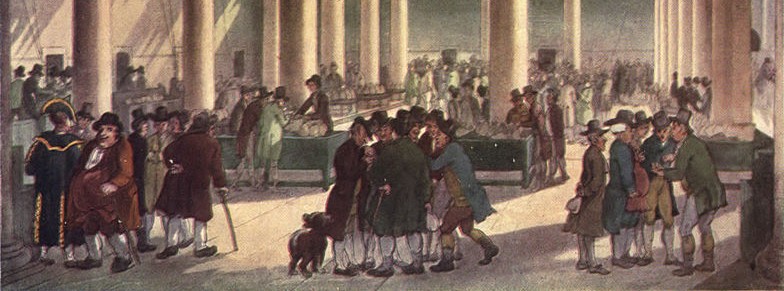

This work is licensed under a Creative Commons Attribution 4.0 International License.
From the end of the Great Depression to the mid-1970s, Keynes provided the main inspiration for economic policy makers in Europe, America and much of the rest of the world. He became well respected because of his intensive research on business cycles. His thoughts are the basis of Keynesian economics.
John Maynard Keynes was born on June 5th, 1883 in Cambridge, England. He was born to a upper middle class family. He studied math at Eton College and Kings College. It was during college that Alfred Marshall, an economist, encouraged Keynes to pursue the science of economics. The study of economics was a relatively new concept at the time. Keynes then published his first economic article in 1909, and by 1911 he was editor of the Economic Journal (Pettinger, 2013).
From there, he took on a role advising the government on economics during World War I (1914-1918). He helped to negotiate with Britain’s creditors and was part of the British delegation to the Treaty of Versailles. The Treaty of Versailles was the peace settlement after World War I.


This work is licensed under a Creative Commons Attribution 4.0 International License.
“The Treaty seemed to satisfy the “Big Three” (Woodrow Wilson of The United States, David Lloyd George of Britain, and Georges Clemenceau of France) and as in their eyes it was a just peace as it kept Germany weak yet strong enough to stop the spread of communism; kept the French border with Germany safe from another German attack and created the organization, the League of Nations, that would end warfare throughout the world. However, it left a mood of anger throughout Germany as it was felt that as a nation Germany had been unfairly treated (Trueman, 2014).”

Sweeping up banknotes during hyperinflation in Germany.
This work is licensed under a Creative Commons Attribution 4.0 International License.
He then resigned from the delegation after disagreeing with their actions towards Germany and took time to write the Economic Principles of the Peace in 1919 (Pettinger, 2013). In this work, Keynes predicted the hyperinflation in Germany of 1923.
The basic principle of Keynes’ work was that in a recession, there were wasted resources due to falling private sector investment and spending. Therefore, the government should step in and by increasing government spending making the unemployed resources, lying idle become used (Pettinger, 2013).
One of his works besides The Economic Principles of the Peace was his groundbreaking work in The General Theory of Employment, Interest, and Money in 1936. This provided a framework for macroeconomics and was considered radical compared to other works of the time (Pettinger, 2013). Even though his health suffered in 1940, he was still asked to help with British negotiations with America after World War II (Pettinger, 2013). Also after the war, governments in the west pursued Keynesian economic theory in order to help achieve full employment. His work was challenged by neo-classical economists but modern day events such as the United States recession from 2008 to 2013 have caused an increased interest in Keynesian theories.
Considering Keynes’ personal life, outside economics, he was lover of the arts and opera. Keynes married Lydia Lopokova in 1925 but was also known to have many affairs with both men and women (Pettinger, 2013). He used his knowledge of economics to make money in the stock market but he did not predict the stock market crash in 1929. In the 1930’s his investments made a good return though (Pettinger, 2013).
John Maynard Keynes died of a heart attack in 1946 at the age of 62.
Pettinger Trejvan. “Biography of John M Keynes“, Oxford, www.biographyonline.net. 3 Feb. 2013
Trueman, Chris. “The Treaty of Versailles.” The Treaty of Versailles. History Learning Site, 2013. Web. 12 Apr. 2014.
